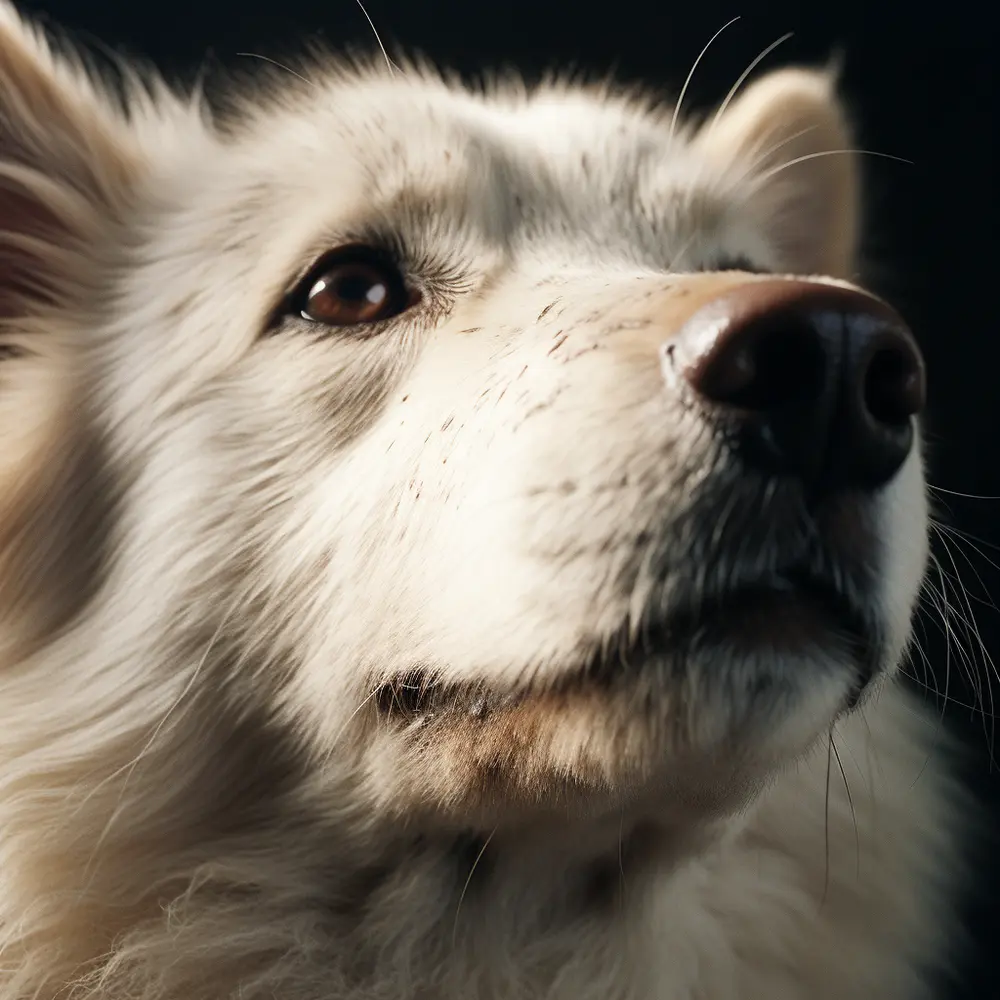Table of Contents:
Introduction: The World of Canine Olfaction
If you've ever watched dogs at the park, you'll notice they seem to ‘see’ with their noses, picking up scents, always on a tireless quest to unravel an unseen world. This is due to their incredible genetic gift of canine olfaction, an aspect of their biology that's both fascinating and awe-inspiring. In this article, we will take a deep dive into the captivating realm of a dog's nose, revealing how their powerful sense of smell shapes how they interact with the world.
Whether you're a dog owner eager to find out more about your furry companion's capabilities or a budding biologist looking to explore the science behind canine superpowers, this article will provide insight into the extraordinary nose of man's best friend. Understanding the biological and anatomical makeup of a dog's olfactory system can bridge the communication gap between humans and dogs, fostering a deeper connection.
Understanding the Anatomy of a Dog's Nose
Let's begin our exploration of canine olfaction by examining the physical makeup of a dog's nose. As with our human noses, the canine's snout comprises an outer and inner part, both playing crucial roles in olfaction.
The outer part, what we commonly refer to as the wet nose or rhinarium, is richly populated with scent-detecting nerve cells. The moisture helps to dissolve molecules from the environment, making them easier for dogs to smell. The different grooves and patterns on each dog's nose are as unique as human fingerprints!
Moving inside, the dog's nasal passage is not just a breathing channel but also a sophisticated odour-detection system. Inside this nasal labyrinth, an extensive network of olfactory receptors, up to 300 million (compared to a human's modest 6 million), work in harmony to identify and separate different scents. This complex structure is one of the factors that make dogs' sense of smell so extraordinary.
The Biological Science Behind Canine Olfaction
The biological workings of a dog's nose are a marvel of nature. The magic happens in a specific region inside the nasal cavity known as the olfactory epithelium. It is here where the myriad of olfactory receptors are located, each capable of identifying a different odorant molecule. When a dog sniffs, the air splits into two separate paths - one for respiration and the other for sensation of smell.
Once the molecules reach the olfactory epithelium, they settle onto the olfactory receptors, launching a neural response that travels directly to the olfactory bulb in the brain. Unlike humans, dogs have a large area of their brains dedicated to analysing odours. This is where the dog's brain identifies the smell and decides the proper response be it food, friend, foe, or something else entirely.
Furthermore, dogs have a secondary olfactory system that's not found in humans: the vomeronasal organ sometimes referred to as Jacobson's organ. This specialized area, located at the bottom of a dog's nasal passage, picks up pheromones, the chemical markers that convey social information among animals. This explains why dogs sniff each other so intently when they first meet.
All these biological factors work together, establishing canine olfaction as a potent tool for navigating the world. It goes far beyond what we understand as smell, shedding light on moods, health, and even the passage of time.
How Do Dogs Compare to Humans in Terms of Smelling Capabilities?
Compared to humans, dogs' smelling capabilities are in a league of their own. To put this into perspective, consider this: while our human noses house about 6 million olfactory receptors, a dog's nose hosts up to 300 million. Dogs' brains are also 40 times more dedicated to analyzing smells. This is like comparing a book filled with scent-data running into hundreds of pages (humans) to a vast library of comprehensive smell-encyclopedias (dogs).
Not only can dogs distinguish odours at concentrations nearly 100,000 times lower than humans, but they can also separate and identify each individual smell in scent 'cocktails'. While humans might smell a cake baking as one aroma of sweetness, dogs can separately smell the sugar, the eggs, the flour, and each individual spice.
In addition, dogs' ability to detect and remember scents surpasses our own - they may even be able to smell disease. Some dogs are currently being trained, for example, to sniff out certain forms of cancer, malaria, and even bacterial infections. So the saying goes, dogs have a nose for everything!
The mastery of canine olfaction equips our four-legged friends to work in crucial roles such as assistance dogs, search-and-rescue dogs, and even in law enforcement with sniffer dogs. Having these insights into their superior smelling capabilities helps us appreciate even more what incredible creatures they are.
Canine Olfaction in Practical Use
Dogs' superior smelling abilities serve many practical purposes. In roles as diverse as law enforcement and health care, canine olfaction contributes significantly to our day-to-day lives.
Detector dogs, for example, are invaluable in fields such as law enforcement and border control. These dogs are trained to detect substances like illegal drugs, explosives, and smuggled goods. Their ability to separate out individual odours makes them exceptional at uncovering any illicit items, even when hidden amongst countless other scents.
There is also much promise in the use of dogs' potent sense of olfaction in medical applications. As already mentioned, certain dogs are being trained to detect diseases like cancer with impressive rates of success. These dogs can potentially identify diseases in early stages, thus opening avenues for early, potentially life-saving, treatment.
Beyond physical health, dogs' keen sense of smell may also help us humans with our mental and emotional states. The rise of emotional support dogs testifies to this. These dogs can detect cortisol, the stress hormone, in our sweat and respond accordingly to calm us down. This remarkable ability has helped many people manage conditions such as anxiety and post-traumatic stress disorder.
From the well-known use of rescue dogs finding lost individuals to the intriguing prospect of dogs detecting diseases, it's clear that the incredible power of canine olfaction extends effectively beyond the curiosity of understanding a dog's world.
Conclusion: Celebrating the Power of a Dog's Nose
In conclusion, the world through a dog's nose is one of vibrant scents and unseen narratives. Perceiving the world largely through their olfactory sense, dogs possess an extraordinary capacity for scent detection far more expansive than our human senses could ever grasp. This extensive canine olfaction capability illustrates not just a profound difference in our sensory experiences, but also highlights the valuable roles dogs play within various aspects of society.
From tracking missing persons, detecting health issues, to enriching our lives as companions, the power of a dog's nose is an impressive testament to evolutionary biology. It provides them with the means to understand and communicate with the world in an entirely different yet meaningful way. By acknowledging and respecting these exceptional abilities, we enhance our bond with dogs, deepening our understanding and appreciation for their inherent abilities.
So, next time you see your dog sniffing around with enthusiasm, remember they are interacting with the world in a way we humans can barely imagine. They are not just smelling; they are observing, analysing, and deciphering their environment, one scent at a time. And that is truly a marvel worth celebrating.
Canine Olfactory Wonders: Understanding Dog's Sensory Superpowers
What makes a dog's sense of smell so powerful?
A dog's sense of smell is powerful due to a combination of up to 300 million olfactory receptors in their noses—a stark contrast to a human's 6 million receptors. Additionally, a specialized area in their brains is devoted to analyzing smells, making their olfactory ability much more refined than in humans.
How do dogs use their sense of smell to communicate?
Dogs use their sense of smell to pick up pheromones and other chemical cues which convey a plethora of social information, such as mating readiness, emotional state, and territorial boundaries.
Can dogs really sniff out diseases such as cancer?
Yes, some dogs are trained to detect various diseases, including cancer, by sniffing human body samples. Studies have shown dogs can detect lung cancer from breath samples and ovarian cancer in blood samples with high degrees of accuracy.
What roles do dogs with a strong sense of smell play in society?
Dogs with a strong sense of smell serve in law enforcement as detection dogs, in medical fields as disease detectors, in search-and-rescue missions, and as emotional support animals, among other roles.
How does a dog's sense of smell compare to a human's?
A dog's sense of smell is estimated to be tens of thousands to possibly 100,000 times more acute than a human's. This is because of the greater number of olfactory receptors and a larger portion of the canine brain dedicated to analyzing scents.








